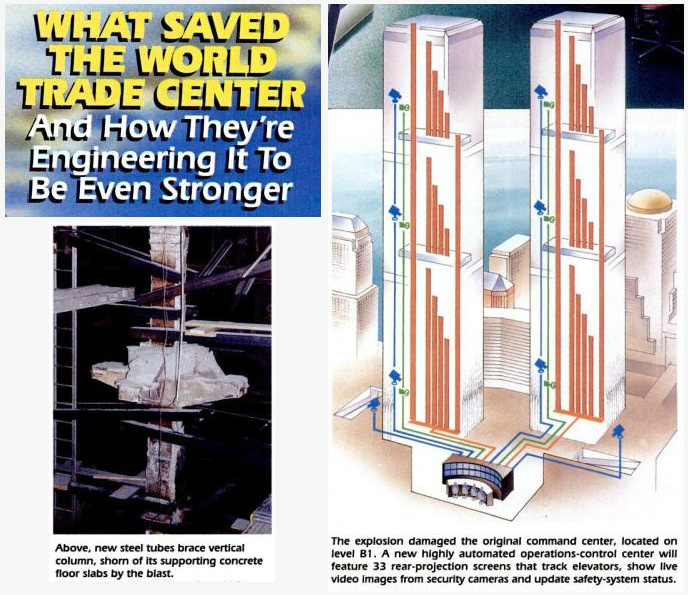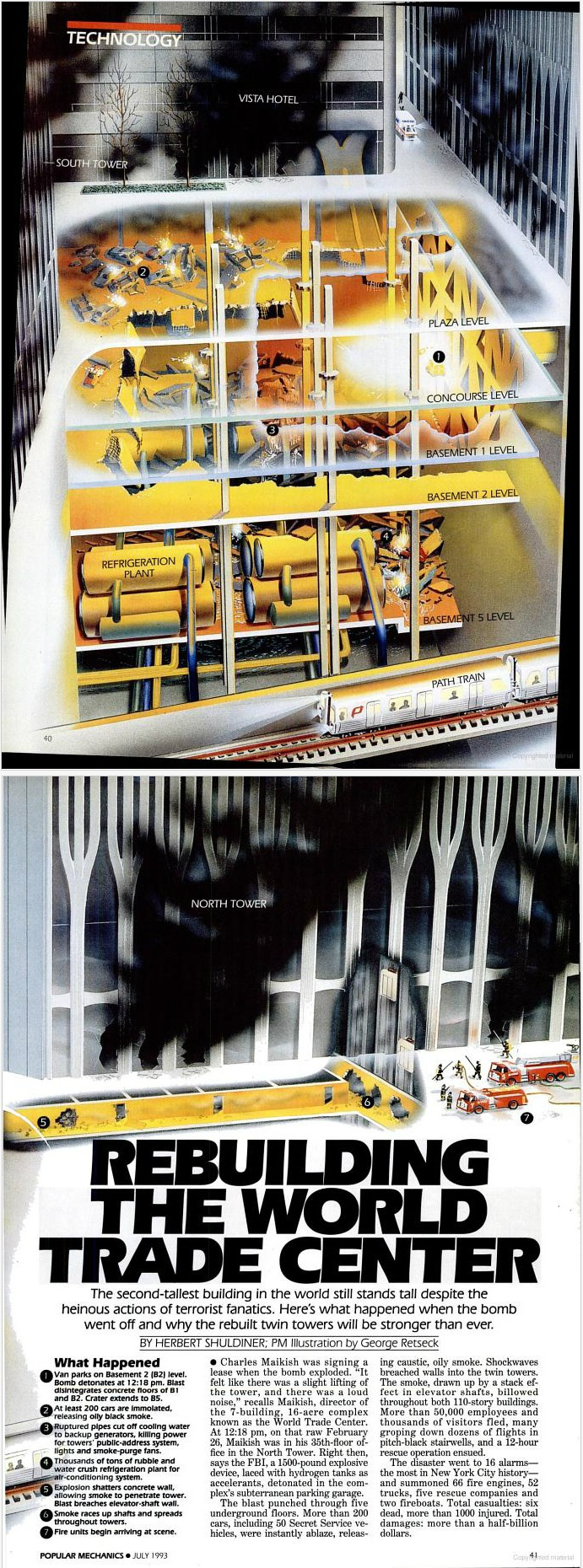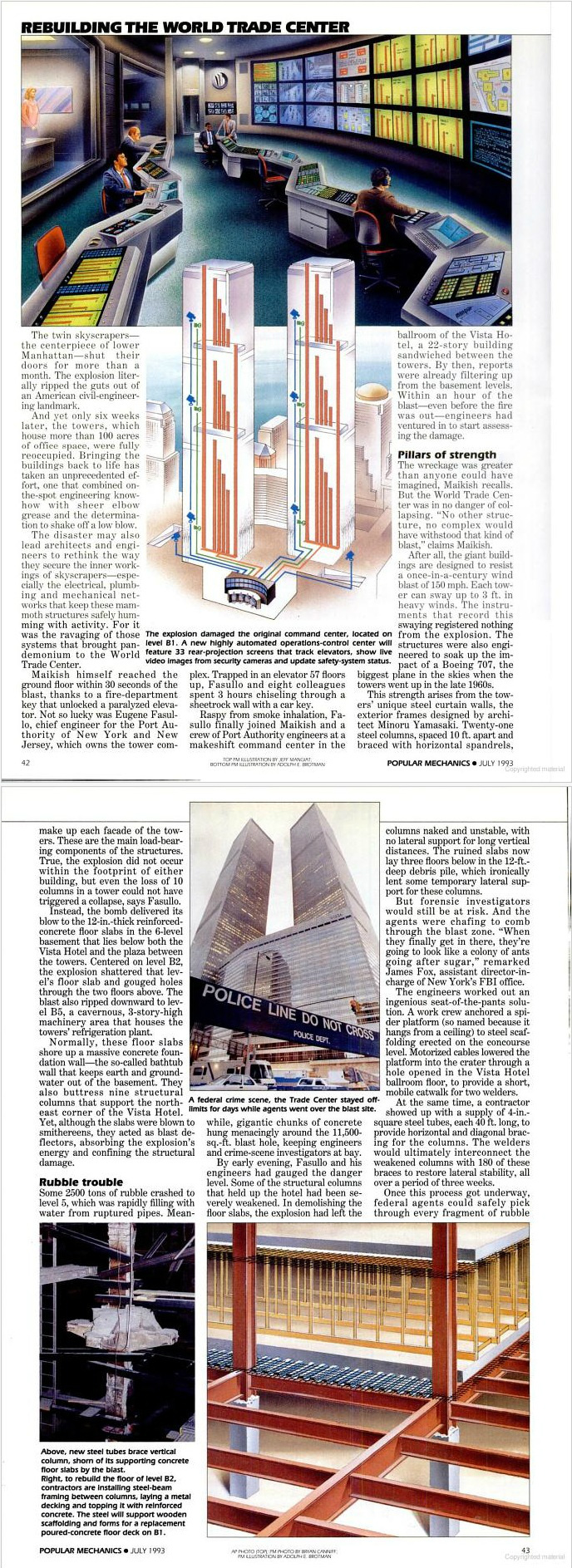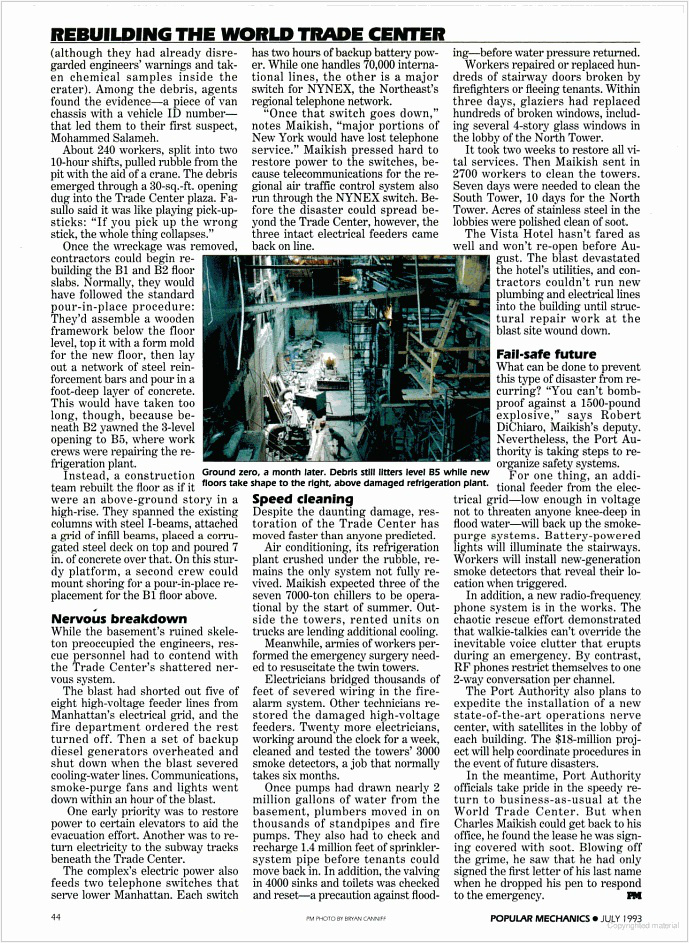Very
interesting interview with the Charles
Maikish, director of all 7 buildings of
the WTC complex in science/engineering
magazine Popular
Mechanics in 1993
following the first terrorist attack on
the complex.
The wreckage was
greater than anyone
could have imagined,
Maikish recalls. But the
World Trade Center
was in no danger of
collapsing. "No
other structure, no
complex would have
withstood that kind
of blast," claims
Maikish.
After all, the
giant buildings are
designed to resist a
once-in-a-century
wind blast of 150
mph. Each tower can
sway up to 3 ft. in
heavy winds. The
instruments that
record this swaying
registered nothing
from the explosion.
The structures were
also engineered to
soak up the impact
of a Boeing 707, the
biggest plane in the
skies when the
towers went up in
the late 1960s.
This unique
strength arises from
the towers' unique
steel curtain walls,
the exterior frames designed
by architect Minoru
Yamasaki. Twenty-one
steel columns,
spaced 10 ft. apart
and braced with
horizontal
spandrels, make up
each facade of the
towers. These are
the main
load-bearing
components of the
structures. True,
the explosion did
not occur within the
footprint of either
building, but even
the loss of 10
columns in a tower
could not have
triggered a collapse
says Fasullo.








































World Trade Towers 1, 2, 7 are all a true indictment of USA's engineering capabilities. After-all, a simple fire brought down building 7, and buildings 1 and 2 are examples of what an upper floor fire can do on ANY reinforced-steel building...
Reply